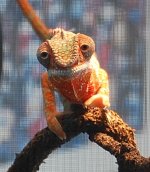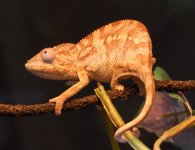-
Hello!
Either you have not registered on this site yet, or you are registered but have not logged in. In either case, you will not be able to use the full functionality of this site until you have registered, and then logged in after your registration has been approved.
Registration is FREE, so please register so you can participate instead of remaining a lurker....
Please be certain that the location field is correctly filled out when you register. All registrations that appear to be bogus will be rejected. Which means that if your location field does NOT match the actual location of your registration IP address, then your registration will be rejected.
Sorry about the strictness of this requirement, but it is necessary to block spammers and scammers at the door as much as possible.
You are using an out of date browser. It may not display this or other websites correctly.
You should upgrade or use an alternative browser.
You should upgrade or use an alternative browser.
Louie and Lulu
- Thread starter Lynnea
- Start date
Nanci
Alien Lover
Not much information about eyesight out there that I can find...yet!!
The chameleon famously has two eyes that work independently of one another. Thus it can be looking up with one eye, and down with the other. The reason for this is that rather than being sunk into eye sockets, its eyes are mounted on little turrets. But even so, a chameleon’s eyes can see colour just like we do. Chameleons, as well as some other kinds of lizards, have a rudimentary third eye which can detect violet and blue light.
Their eyes are the most distinctive among the reptiles. The upper and lower eyelids are joined, with only a pinhole large enough for the pupil to see through. They can rotate and focus separately to observe two different objects simultaneously. It in effect gives them a full 360-degree arc of vision around their body. When prey is located, both eyes can be focused in the same direction, giving sharp stereoscopic vision and depth perception. They have very good eyesight for reptiles, letting them see small insects from a long (5–10 cm) distance.
The chameleon famously has two eyes that work independently of one another. Thus it can be looking up with one eye, and down with the other. The reason for this is that rather than being sunk into eye sockets, its eyes are mounted on little turrets. But even so, a chameleon’s eyes can see colour just like we do. Chameleons, as well as some other kinds of lizards, have a rudimentary third eye which can detect violet and blue light.
Their eyes are the most distinctive among the reptiles. The upper and lower eyelids are joined, with only a pinhole large enough for the pupil to see through. They can rotate and focus separately to observe two different objects simultaneously. It in effect gives them a full 360-degree arc of vision around their body. When prey is located, both eyes can be focused in the same direction, giving sharp stereoscopic vision and depth perception. They have very good eyesight for reptiles, letting them see small insects from a long (5–10 cm) distance.
Bartholomew
Big Brotha Bart
Love that first picture! Looks like one of thoes wise, old animals in cartoons that always give good advice.
Lynnea
That's "lin-NAY-ah"
I think these are the same species as the guys that were mounted 10-12 feet in the air at a booth at Daytona this year. I thought they were statues until one of them nailed a bug out of midair!
I saw the same thing either last year or the year before--very cool!
Lynnea
That's "lin-NAY-ah"
Love that first picture! Looks like one of thoes wise, old animals in cartoons that always give good advice.
I should've named him Yoda: "Teach you about eating bugs, I will. heh heh heh!"


